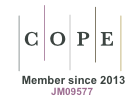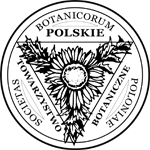Utilization of Indian Dammar Bee (Tetragonula iridipennis Smith) as a Pollinator of Bitter Gourd
Abstract
Keywords
References
Abrol, D. P., Gorka, A. K., Ansari, M. J., Al-Ghamdi, A., & Al-Kahtani, S. (2019). Impact of insect pollinators on yield and fruit quality of strawberry. Saudi Journal of Biological Sciences, 26(3), 524–530. https://doi.org/10.1016/j.sjbs.2017.08.003
Ahmed, I., Adeghate, E., Sharma, A. K., Pallot, D. J., & Singh, J. (1998). Effect of Momordica charantia fruit juice on islet morphology in the pancreas of the streptozotocin-diabetic rat. Diabetes Research and Clinical Practice, 40, 145–151. https://doi.org/10.1016/S0168
Bahadur, B., Rajam, M. V., Sahijram, L., & Krishnamurthy, K. V. (2015). Plant biology and biotechnology: Plant diversity, organization, function and improvement (Vol. 1). Springer. https://doi.org/10.1007/978-81-322-2286-6_34
Bisui, S., Layek, U., & Karmakar, P. (2019). Comparing the pollen forage pattern of stingless bee (Trigona iridipennis Smith) between rural and semi-urban areas of West Bengal, India. Journal of Asia-Pacific Entomology, 22, 714–722. https://doi.org/10.1016/j.aspen.2019.05.008
Deyto, R. C., & Cervancia, C. R. (2009). Floral biology and pollination of ampalaya (Momordica charantia L.). Philippine Agricultural Scientist, 92(1), 8–18.
Free, J. B. (1993). Insect pollination of crops (2nd ed.). Academic Press.
Goulson, D., Nicholls, E., Botías, C., & Rotheray, E. L. (2015). Bee declines driven by combined stress from parasites, pesticides, and lack of flowers. Science, 347(6229), Article 1255957. https://doi.org/10.1126/science.1255957
Heard, T. A. (1999). The role of stingless bees in crop pollination. Annual Review ofEntomology, 44, 183–206. https://doi.org/10.1146/annurev.ento.44.1.183
Kishan, T. M., Srinivasan, M. R., Rajashree, V., & Thakur, R. K. (2017). Stingless bee Tetragonula iridipennis Smith for pollination of greenhouse cucumber. Journal of Entomology and Zoology Studies, 5(4), 1729–1733.
Klein, A. M., Vaissiere, B. E., Cane, J. H., Steffan-Dewenter, I., Cunningham, S. A., Kremen, C., & Tscharntke, T. D. (2007). Importance of pollinators in changing landscapes for world crops. Proceedings of the Royal Society B: Biological Sciences, 274, 303–313. https://doi.org/10.1098/rspb.2006.3721
Kovacs-Hostyanszki, A., Batary, P., & Baldi, A. (2011). Local and landscape effects on bee communities of Hungarian winter cereal fields. Agricultural and Forest Entomology, 13, 59–66. https://doi.org/10.1111/j.1461
Kukutani, T., Inoue, T., & Maeta, Y. (1993). Pollination of strawberry by the stingless bee, Trigona minangkabao, and the honeybee, Apis mellifera: An experimental study of fertilization efficiency. Researches on Population Ecology, 35, 95–111. https://doi.org/10.1007/BF02515648
Layek, U., & Karmakar, P. (2018). Nesting characteristics, floral resources, and foraging activity of Trigona iridipennis Smith in Bankura District of West Bengal, India. Insectes Sociaux, 65, 117–132. https://doi.org/10.1007/s00040
Maeta, Y., Tezuka, T., Nadano, H., & Suzuki, K. (1992). Utilization of the Brazilian stingless bee Nannotrigona testtaceicornis as a pollinator of strawberry. Honey Bee Science, 13, 71–78.
Matsuda, M., & DeFronzo, R. A. (1999). Insulin sensitivity indices obtained from oral glucose tolerance testing: Comparison with the euglycemic insulin clamp. Diabetes Care, 22, 1462–1470. https://doi.org/10.2337/diacare.22.9.1462
Partap, U., & Ya, T. (2012). The human pollinators of fruit crops in Maoxian Country, Sichuan, China, a case study of the failure of pollination services and farmers’ adaptation strategies. Mountain Research and Development, 32(2), 176–186. https://doi.org/10.1659/MRD-JOURNAL-D-11
Potts, S. G., Biesmeijer, J. C., Kremen, C., Neumann, P., Schweiger, O., & Kunin, W. E. (2010). Global pollinator declines: Trends, impacts and drivers. Trends in Ecology and Evolution, 25(6), 345–353. https://doi.org/10.1016/j.tree.2010.01.007
Raza, H., Ahmed, I., John, A., & Sharma, A. K. (2000). Modulation of xenobiotic metabolism and oxidative stress in chronic streptozotocin-induced diabetic rats fed with Momordica charantia fruit extract. Journal of Biochemical and Molecular Toxicology, 14, 131–139. http://doi.org/d66fgk
Roubik, D. W. (1995). Pollination of cultivated plants in the tropics. Food and Agriculture Organization of the United Nations.
Shan, B., Xie, J. H., & Peng, Y. (2012). Ethanol modified supercritical carbon dioxide extraction of flavonoids from Momordica charantia L. and its antioxidant activity. Food and Bioproducts Processing, 90, 579–587. https://doi.org/10.1016/j.fbp.2011.09.004
Subhakar, G., Sreedevi, K., Manjula, K., & Reddy, N. P. E. (2011). Pollinator diversity and abundance in bitter gourd, Momordica charantia Linn. Pest Management in Horticultural Ecosystems, 17(1), 23–27.
Walters, T. W., & Decker-Walters, D. S. (1988). Balsam-pear (Momordica charantia, Cucurbitaceae). Economic Botany, 42, 286–288.
DOI: https://doi.org/10.5586/aa.7316
|
|
|







